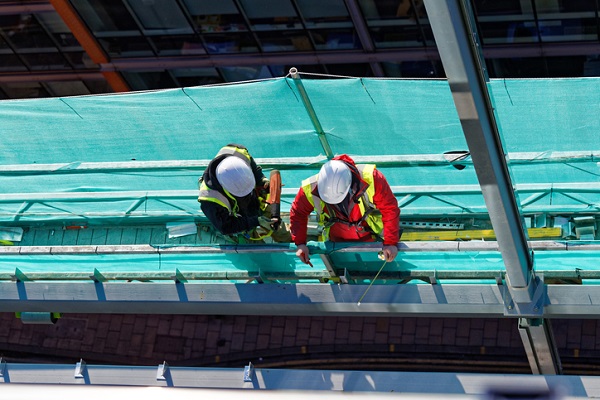Elevating building safety: Revitalised standards aim for enhanced edge protection

The recent revision of the standards for edge protection is a significant step in the drive to enhance safety and efficiency within the construction industry.
AS/NZS 4994 parts 1, 2, and 3 was reviewed by the Standards Australia committee BD-092, Temporary Edge Protection-Construction Practice, and the revised standard is expected to be published in late-August/September 2023 (2023 Standard).
This review and subsequent updates to AS/NZS 4994 reflect a concerted effort to elevate safety standards and operational efficiency within construction practices by addressing areas of potential ambiguity, incorporating modern practices, and aligning with market needs.
The updated guidelines encapsulated in the AS/NZS 4994 series set the stage for safer, more efficient construction practices in line with contemporary demands.
This 2023 Standard supersedes AS/NZS 4994:2009 (2009 Standard), a move intended to ensure the adoption of updated practices on construction sites to prioritise the safety of installers and other individuals in the vicinity.
It had become evident that there have been compliance issues with the established 2009 Standard, as there were occasions when appropriate roof edge protection access was not observed. The revised guidelines aim to improve the clarity of the language to increase compliance relating to the passage of tile conveyors.
Moreover, the review was vital to align them with contemporary market requirements and reflect evolving practices on construction sites.
The goal of this standard review is to maintain and address the relevance of these standards to reflect market demands and foster a culture of safe work practices that benefit not only installers but also those present in the vicinity of construction activities.
The comprehensive series in this revision includes:
- AS/NZS 4994.1:2023, General requirements;
- AS/NZS 4994.2 Roof edge protection – installation and dismantling; and
- AS/NZS 4994.3: 2023 Installation and dismantling for edges other than roof edges.
AS/NZS 4994.1:2023 General requirements:
- specifies the design, manufacture, installation, and testing criteria for temporary edge protection equipment.
- highlights equipment intended for use on roofs with slopes not exceeding 35 degrees to the horizontal, and other exposed edges.
- outlines important preliminary steps before the installation of permanent walling materials.
AS/NZS 4994.2 Roof edge protection- installation and dismantling:
- outlines requirements and provides guidance for the selection, installation, use, and proper dismantling of roof edge protection that conforms to AS/NZS 4994.1.
- specifically addresses temporary roof edge protection on buildings with roof slopes of 35 degrees or less.
AS/NZS 4994.3 Installation and dismantling for edges other than roof edges:
- serves as a vital component of the series, focusing on the installation and dismantling of roof edge protection and aiming to improve safety measures for individuals performing work near floor openings or edges of elevated surfaces.
- applies to surfaces beyond roofs in residential or commercial buildings.
- offers guidance on equipment selection and usage, expanding upon the guidance in AS/NZS 4994.1.
- reinforces the overarching objective to prevent falls and ensure the well-being of workers and other individuals engaged in tasks or inspections on these surfaces.
The significant revisions within AS/NZS 4994:2023 underscore the commitment to enhancing its effectiveness and relevance. Key modifications include a widened scope that now includes AS/NZS 4994.4 and aligns parts 1, 2, and 3.
Additionally, the configuration clauses have been expanded to account for material conveyors, a pivotal aspect of modern construction practices. The testing appendix has undergone updates to ensure clarity, a crucial factor for effective implementation.
The introduction of edge protection for stepped surfaces further underlines the comprehensive nature of this revision. Certain textual modifications within specific clauses have been made to refine and clarify the content, in line with market needs.
